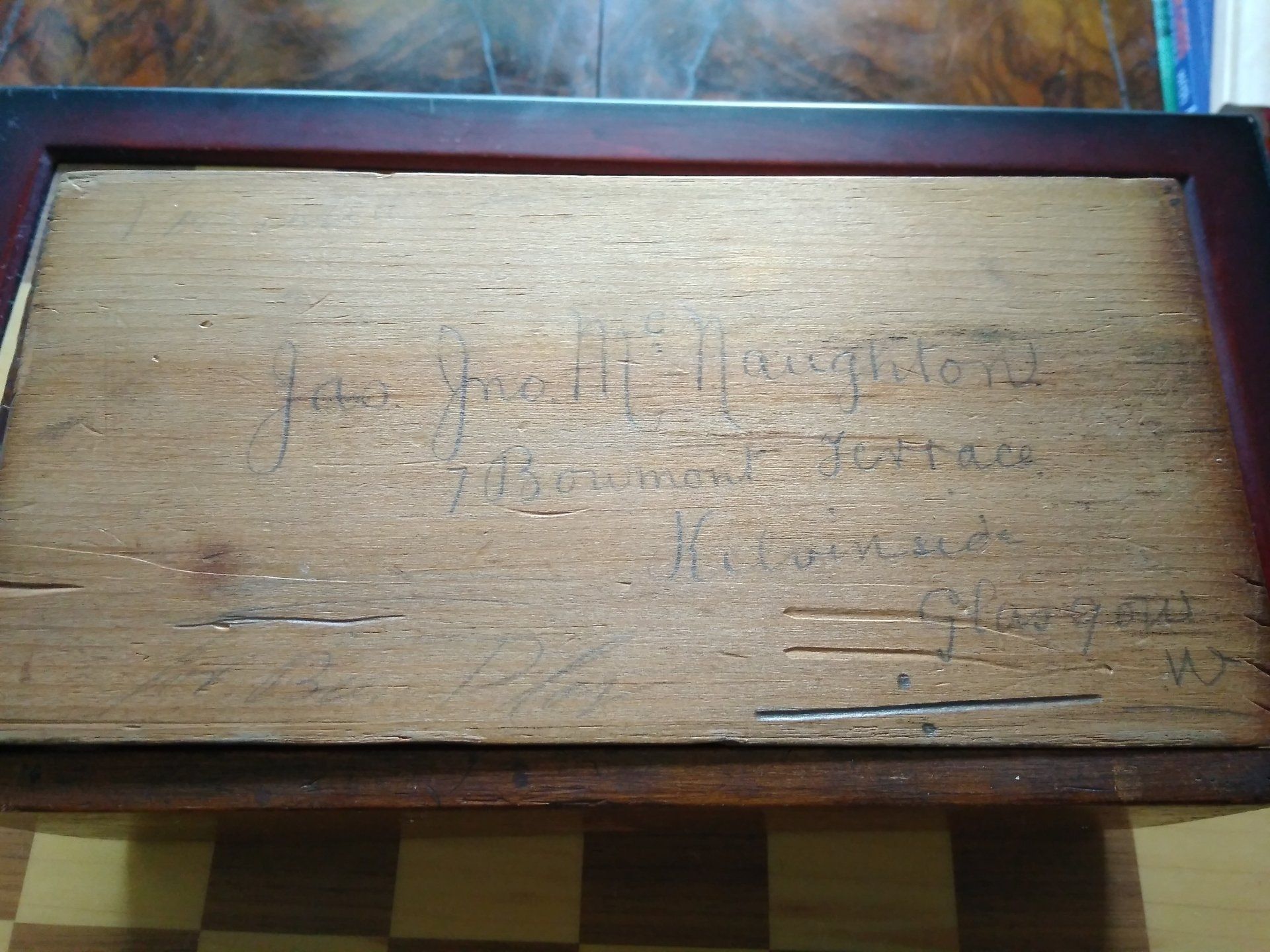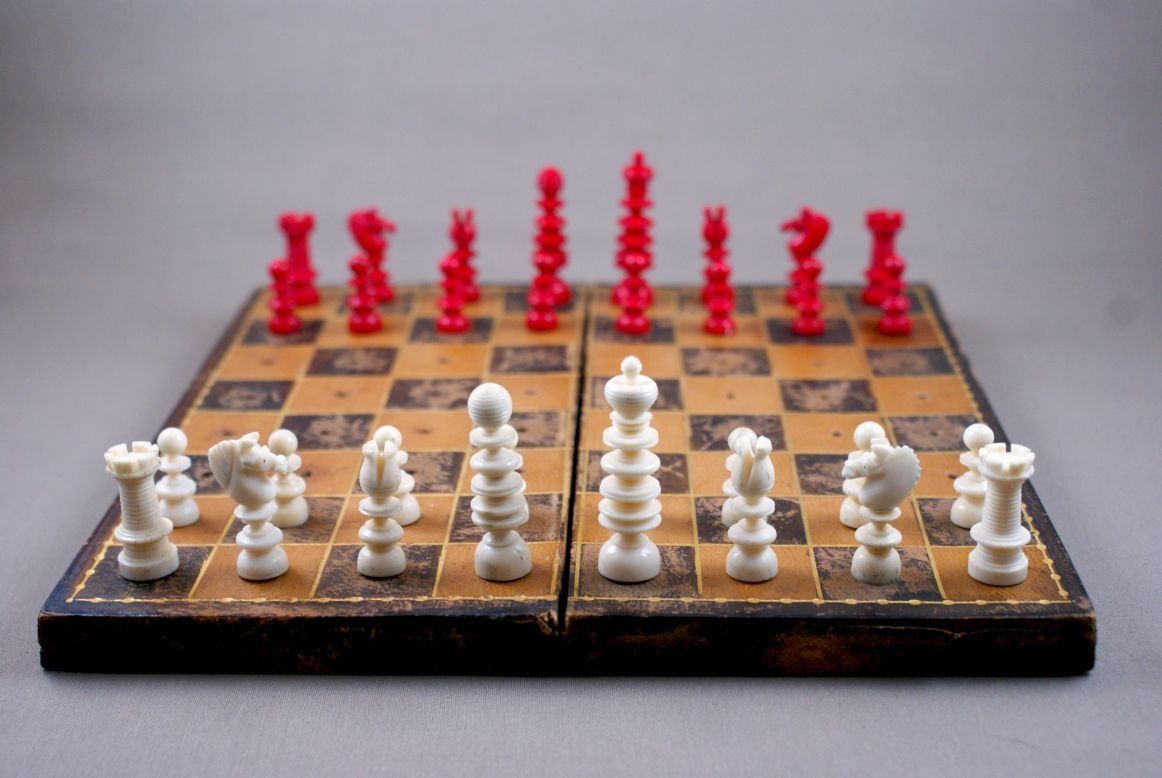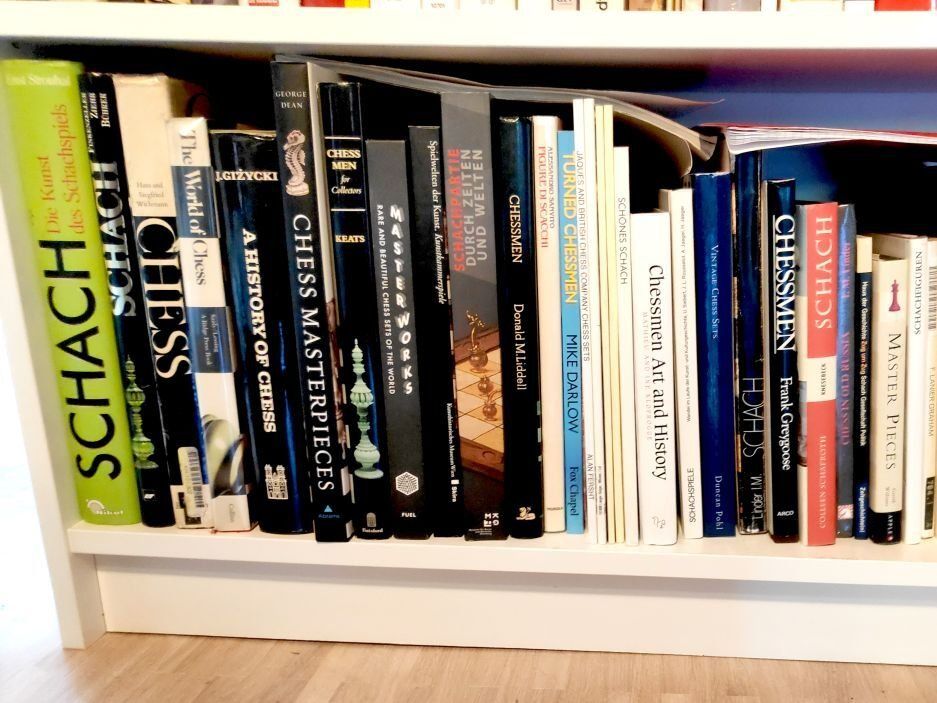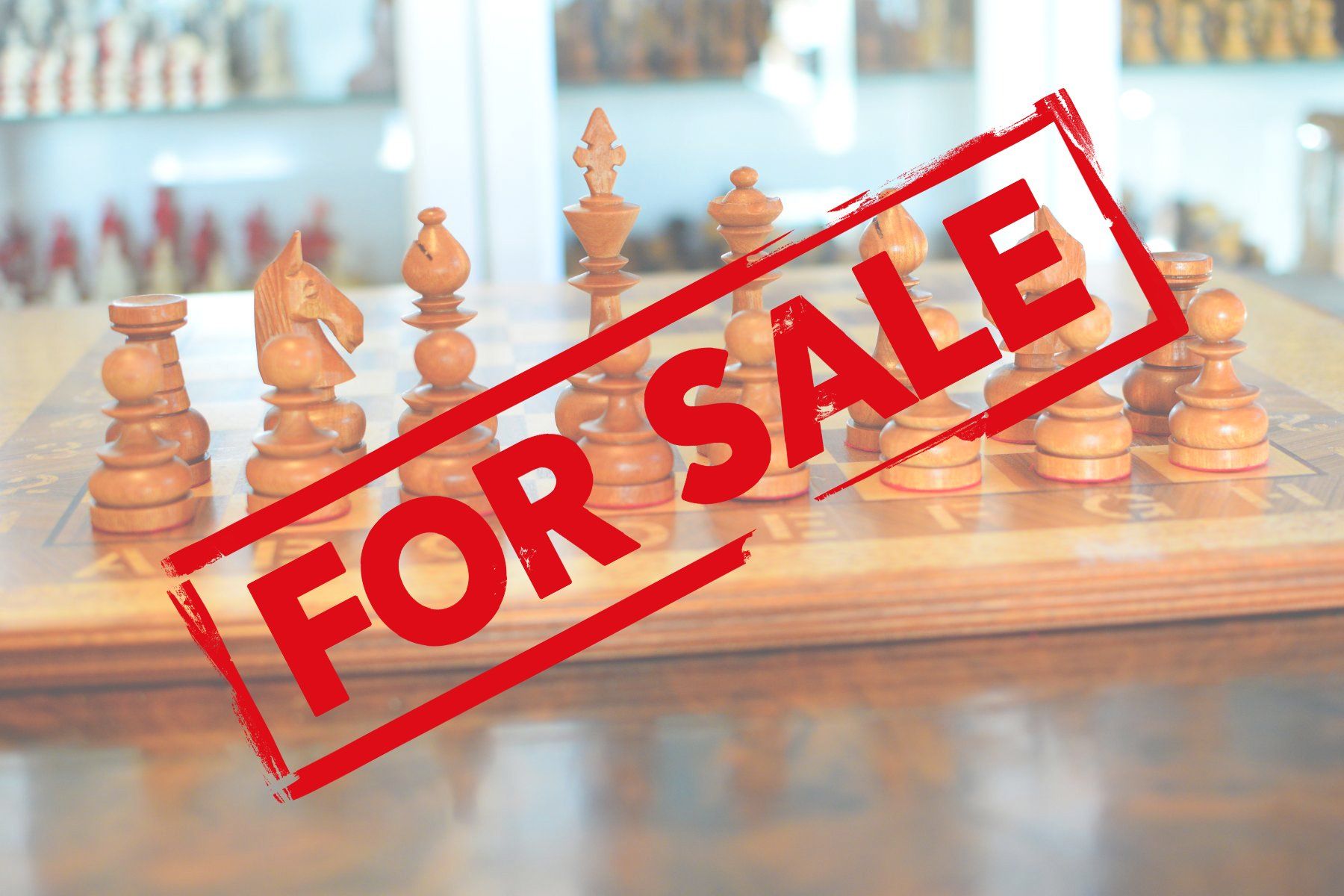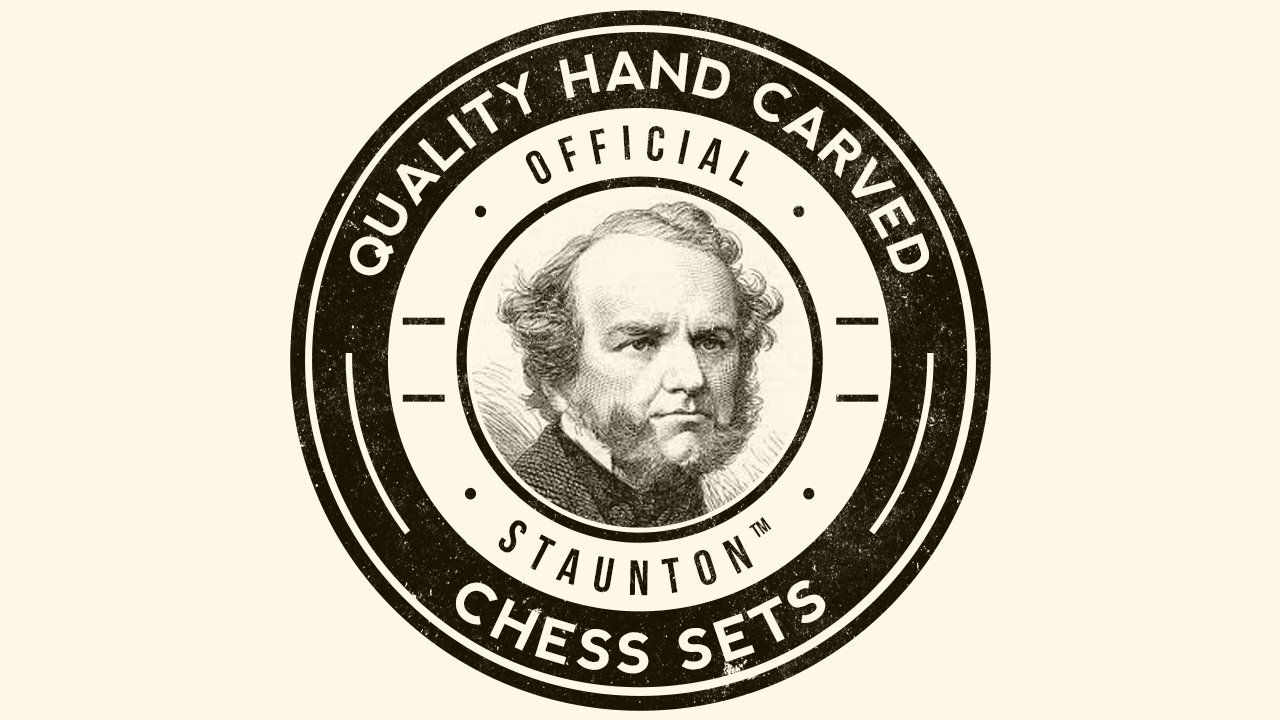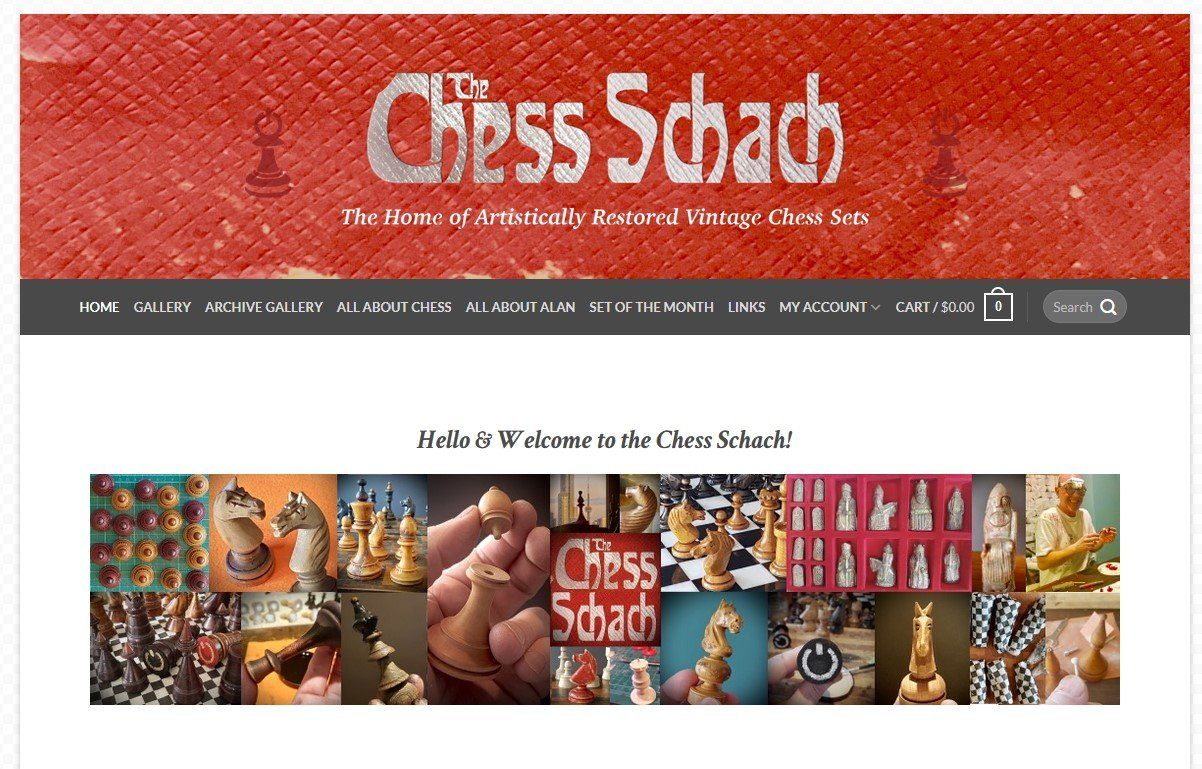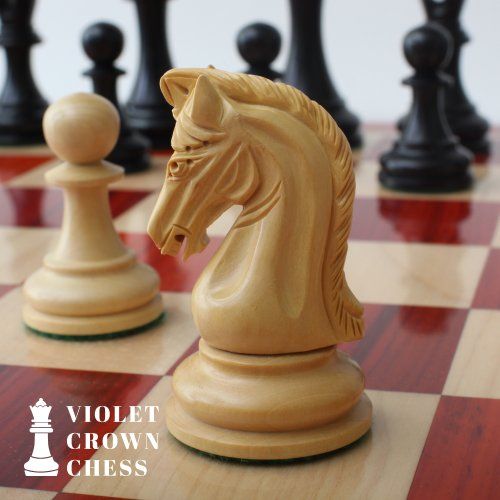English "Northern Upright" Bone Chess Set, mid/late 19th century
English chess set in the "Northern Upright" pattern, most likely from mid/late 19th century. The pieces are turned and carved from bone, one side natural, the opposing side stained red. All pieces on elongated stems with sloping bases. The Kings with urn-shaped finials and a drop shaped top, the Queens with ball finials, the Knights as carved horses' heads, the Bishops with split mitres, the Rooks with six crenellations, the Pawns with ball finials. King size is 72mm.
The design is attributed to Lord John Hay of the Edinburgh Chess Club (hence the name "Edinburgh Upright" or "Northern Upright"), who allegedly invented the design in around 1830-1840, thus preceding the Staunton design.
The set is not as delicate as the Jaques "Northern Upright" Ivory Chess Set in my collection and for sure not of the same quality material. Nevertheless, it comes with a different sort of history. The box, in which I acquired it, is inscribed on the inside of the lid with a name and address, i.e. "Jas. Jno. McNaughton, 7 Bowmont Terrace, Kelvinside, Glasgow". "Jas" is the common abbreviation for James, "Jno" is the abbreviation for John. I did some research and found out that indeed someone with the name James John McNaughton resided under this address from 1902 to 1907. He was a consulting and mining engineer with offices in 52 St. Enoch Square, Glasgow. There is still an engineering consultant company, MHB Consultants Ltd., registered under this address today, but unfortunately the letter "M" in their name does not go back to the mysterious Mr McNaughton.
